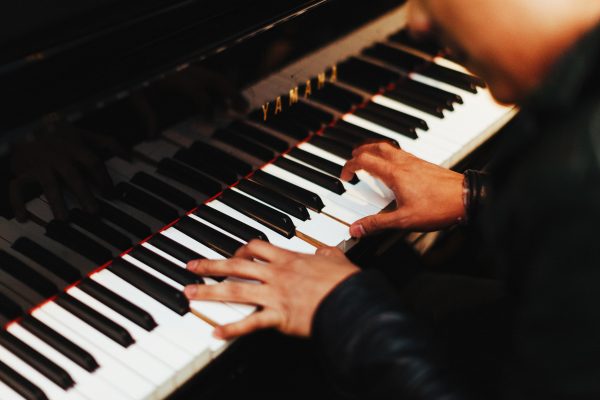Let’s create something different
Sometimes you want to create something new and different then what you usually make. How do you make something different without getting bogged down by old habits? If you sit down with your instrument, chances are that your muscle memory will take over. To do something completely different you’ll have to change your writing process.
The first thing you need to do is stepping away from your comfort zone. Try not think about the end product, rather think about the journey. How do you usually write a song? What can you do to circumvent this way of working?
The outcome is unknown
Take a few minutes to devise a method for writing a song whose outcome is unknown. You probably have to come up with an extremely cumbersome method to bypass your original workflow, but that is exactly the goal. I will give an example.
Through free association around one particular theme, I jot down some sentences on paper. In my DAW I then imported a drum loop over which I could record the words while speaking monotonously. Now that I’ve got some sentences recorded, I can start thinking about the melody. Usually, I sit down with an acoustic guitar and improvise some ideas until I come up with a rough melodic idea.
I had to break free from my old way of working and so I devised an algorithm for making up a melody line. The algorithm goes as follows:
Melody making algorithm
- Get some paper and cut it into a grid of cards.
- Write all natural tones on 7 pieces (A to G).
- Write combinations of intervals, both ascending and descending, down on the rest of the paper.

- Make a pile of natural tones and a pile of intervals and turn them around so you can’t see anything.
- Shuffle both piles and pick a natural tone, put the chosen interval on a new pile.

- Now pick 2 intervals, and repeat steps 5 and 6 until you run out of natural tones.
- When you ran out of natural tones, shuffle everything and start over.
- In the meantime, note your results on a piece of paper or directly in your sequencer.
In this way, I made up a melody that I could never think of by only improvising. Of course, you might want to add some rules to refine the outcome a little bit. Consider limiting the pitch range to make sure your melody stays within 2 octaves.
After I written down the melody it was time to combine it with my recorded words. Cubase has a built-in pitch-correction tool called vari-audio. But with Autotune or Melodyne this is also quite easy to accomplish. In the tuning software, I then assigned the notes from my melody to each syllable. In this way, I get to hear the melody for the first time.
Because my algorithm is based on randomness, the results were pretty interesting. You may now have the inclination to directly intervene and influence the result but try to wait a minute.
Building the foundation
After the melody was made, I started fiddling with a bass part. In this way I could contextualize the melody, making it a lot more useful. Moreover, I was already able to extract a chorus out of the whole recording so that the song started to shape itself.
I did, however, have the idea that one or two notes of the melody could be shifted up or down a half step. At this stage of the process, I allowed myself to make these small adjustments. 
With the basic melody, bass and structure laid down I could color the rest with additional chords. The temporary drum loop also needed to be replaced with something more fitting. Gradually a whole song began to come together. The only thing that remained was to re-record the vocal track with this new melody.
Small adjustments
The lyrics also needed some adjustments here and there to make it work better with the melody. In the end, I managed to come up with a very refreshing result. You might argue that this song is largely written by the algorithm. But on the other hand, the algorithm must be created by you.
This is just one example of an alternative writing process, but there are hundreds of other methods to think of. If you ever get stuck while writing songs, look for a way to reset your writing habits and think of an alternative route to reach your destination.












